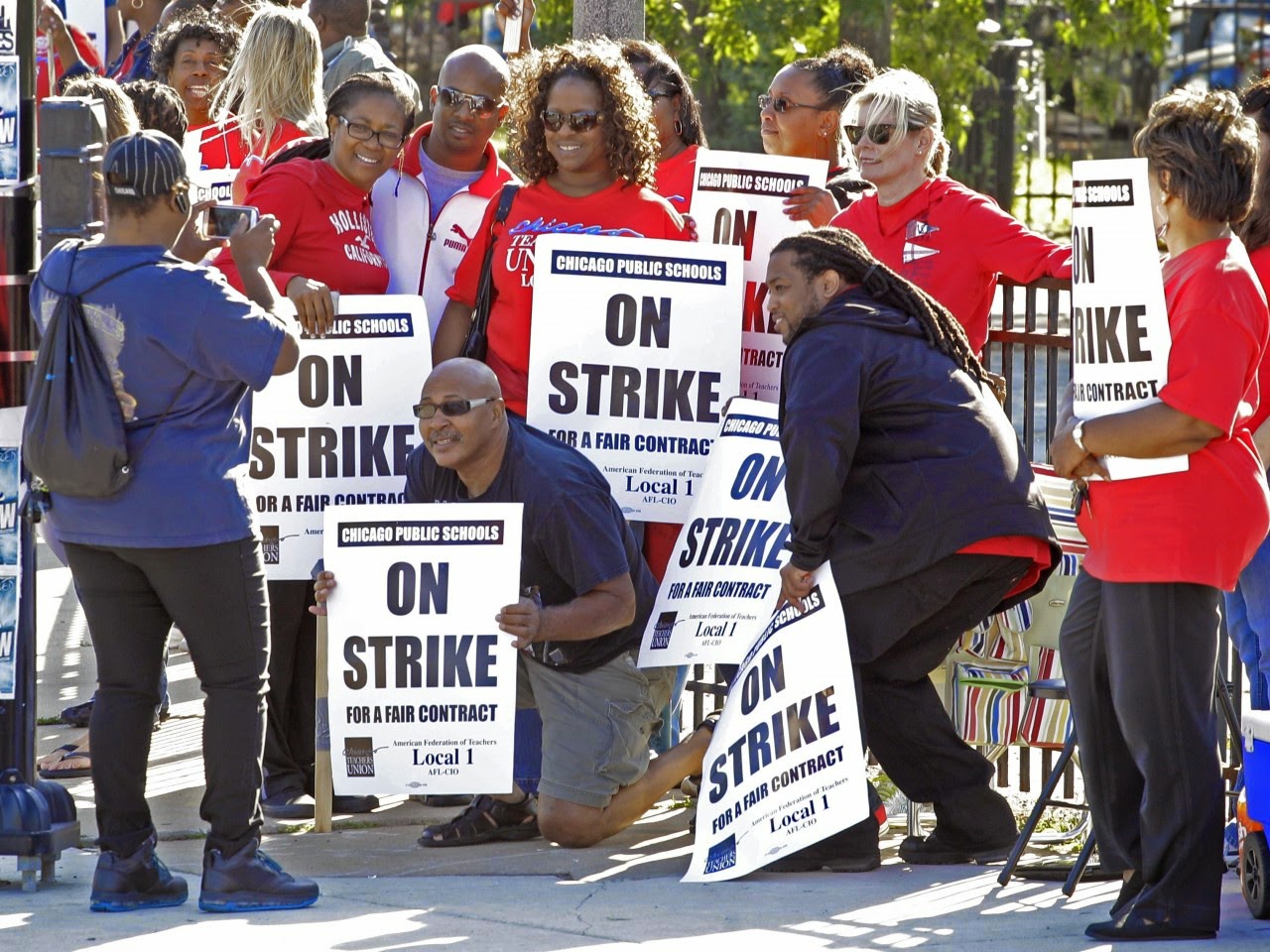Agitprop, Part 8
Chicago Schools Strike 2012
How to Strike
Canadian
Strike Manual; Management Strike Manual
In our whole series of ten-part
courses, of which this is the fifteenth out of sixteen, we have not yet had any
education on how to strike. Strike is the main weapon of the working class in
its struggle with capital. The communists are the partisans of the working
class.
The knowledge of how to
conduct strikes is embedded in the trade union movement and in the minds and
memories of millions of South Africans who have been through the experience of
striking.
To some extent the knowledge
also exists in training institutions like Ditsela, and in the academy. But the
literature is scant. On the Internet we have so far found rather little. The
following quotation is from the work of William Z Foster called “Strike Strategy”.
Foster was a leader of the US Communist Party who ran an organisation called
the Trade Union Educational League (T. U. E. L.).
“STRIKE ORGANIZATION
“It is not
within the province of this booklet to outline a complete system of the special
organization machinery necessary for the carrying on of strikes successfully.
Nevertheless it is timely to state a few of the general principles of
organization and to indicate some of the more urgent necessities.
“The strike
committee, whether the regular executive board or a special body, is the
general staff of the strike and it must be properly organized to carry on its
work. It must be divided into sub-sections to correspond with its various
tasks. If the strike is national in scope the strike committee must contain
various departments, Finance, Relief, Legal, Publicity, etc. The local strike
committees must have sub-committees on Policy, Picketing, Publicity, Defense,
Halls, Speakers, Finance, etc.
“In the case
of unorganized workers every effort must be made to establish a real basis of
trade union organization. Too often the only organization of the masses in such
strikes is in the strike meetings. This is a mistake. The masses must be
brought into active strike work. It gives them a sense of responsibility and a
feeling that the strike is really their own. To thus draw them in, the numerous
committees should be built on a broad scale, T. U. E. L. formations of various
sorts may also be used to actively enlist the livest elements in the conduct of
the strike.
“The picket
committee, in most industries, is the very heart of the strike. It is the
cutting edge of the workers’ organization. It is the first line of defense and
attack. It must be developed to the highest degree of militancy and efficiency.
It should be made up of the very best fighters among the workers...
“The legal
committee is also essential, but the left wing must always be careful to hold
the lawyers in check. They have a rather fatal habit, once they are engaged, of
trying to run the whole strike as well as their legal department. If they
succeed in this they soon strip it of all militancy and reduce it to a state of
impotent legalism. They are also notoriously poor fighters at the conference
table.
“The publicity
committee is very vital. To give out the news of the strike is fundamentally
important, not only for the information of the workers at large, whose support
is wanted, but also for the strikers themselves, whose solidarity must be
maintained. Yet in almost every strike, whether conducted by rights or lefts,
the publicity arrangements are primitive and inadequate in the extreme.”
Foster was himself a
successful strike leader. His book is a must-read.
There are works by Lenin and Luxemburg on
strikes, but they are rather more concerned with the theoretical aspect of
strikes as part of revolutionary strategy and tactics.
What we have found, on the
Internet, is the Canadian “PIPSC” Strike Manual (attached). This is a real strike manual
of a real union. It is a large union, and the scale of the strike organisation
described is large, and it is very instructive. Here is the basic definition of
a strike given in this manual:
“A strike is
the refusal of employees to perform some of or all of their work. Strike
action may take many forms, depending on the characteristics and nature of
the work performed by the striking group. Regardless of the course of
action taken, the objective remains the same: to persuade the employer to
adopt a position acceptable to the union and its members on the issues in
dispute. The union must be in a legal strike position
before undertaking any strike activities. Strike plans should
be prepared prior to a legal strike period. They must be treated as
highly confidential to succeed.”
Employer’s Strike Manual
Finally, we have an
employer’s strike manual (attached). It is very instructive indeed. It is
particularly expressive of the aggressive frame of mind of the employer, and of
the employer’s managers, who are themselves employees.
Reading all of these
documents should make people aware of what a strike feels like. Quite likely it
will make you respect the working people who go through this tough experience.
·
The above is to
introduce two original reading-texts: PIPSC Canadian Strike Manual, 2009,
and Canadian Employer’s (Management)
Strike Manual, 2003.



0 comments:
Post a Comment